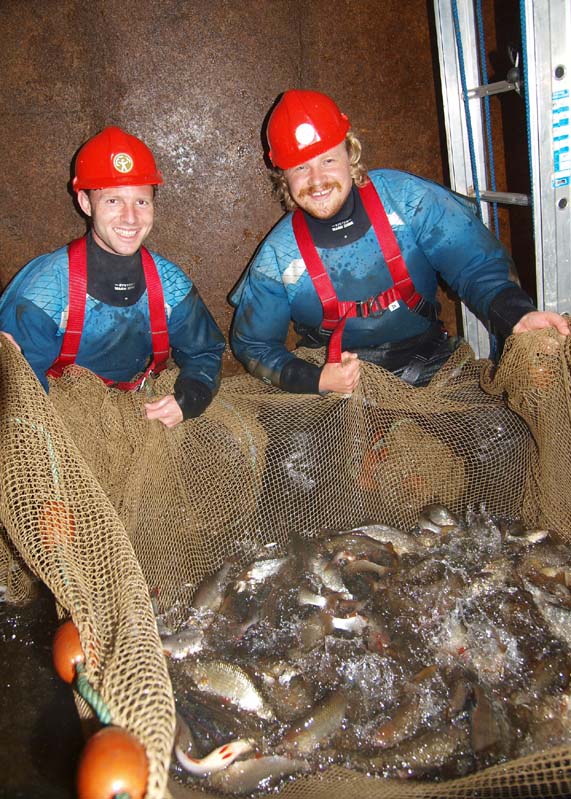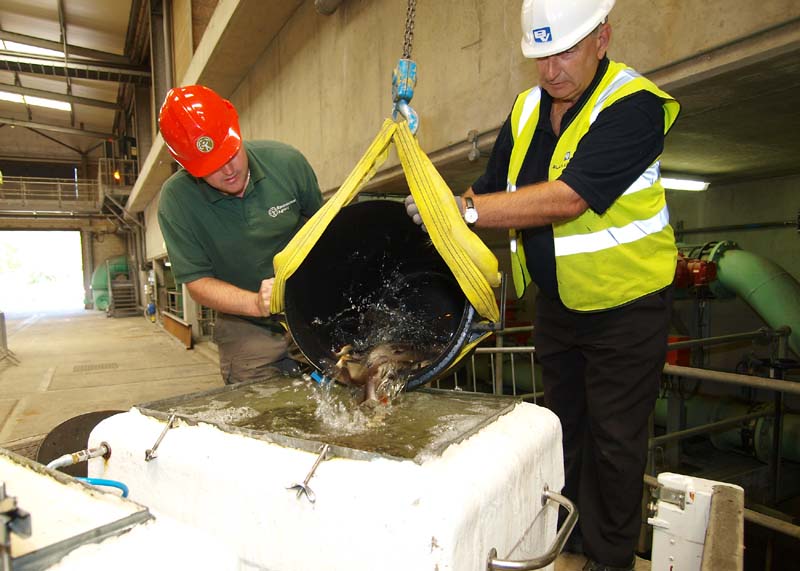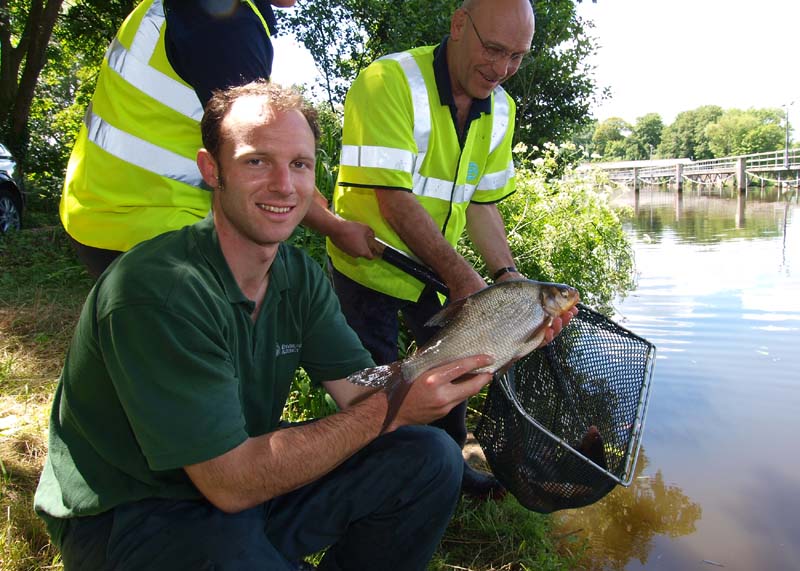Thousands of fish, which have been living in large tanks at a water treatment works for most of their lives, are to be transferred back to the River Thames just as the fishing season begins.
A complex operation to remove the fish from the water treatment plant at Walton, Surrey, started on the opening day of the river season, June 16th, and will see species including roach, perch, eels, bream, minnows and bleak moved to the river.
They were drawn into the tanks some years ago as eggs or baby fish and have been unable to swim back into the natural river course because they have grown too big to swim through the pumps.

Species have been able to survive for so long in the water tanks, which are at the first stage of the treatment process, by feeding on algae and invertebrates.
Six members of the Environment Agency fisheries team have been working in partnership with Thames Water staff to remove them using Seine nets, which act like a fence to encircle groups of fish.
Fish were transferred to oxygenated transport tanks in a vehicle before being placed back into the nearby river. The operation was expected to finish on Thursday 18th of June.
George Gerring, an Environment Agency fisheries technical specialist, said: “I’ve never seen anything quite like this – shoals of specimen fish ideal for restocking back into the river where they belong.
”It has been a complex operation to rescue them but well worth the effort – Thames anglers are going to be delighted!”
Thames Water is carrying out essential maintenance work on the tanks as part of the Walton Service Delivery Project and used this opportunity to perform the restocking. Each of the two tanks is around six metres deep.

The Environment Agency’s fisheries service is funded by income from fishing rod licence sales to directly benefit anglers in England and Wales.
Ignacio Pont Lezica, a Thames Water project construction engineer at Walton, said: “This was a fantastic opportunity to capture and release the fish back to their natural environment.
“It has been a brilliant joint effort between the Environment Agency, Thames Water and our contractors Black and Veatch.”

Rod licence sales generate over £23 million in revenue each year, which the Environment Agency ploughs directly back into the sport.
Any angler aged 12 years or over, fishing for salmon, trout, freshwater fish or eels in England (except the River Tweed), Wales or the Border Esk and its tributaries in Scotland must have an Environment Agency rod licence. The maximum possible fine for fishing without a licence is £2500.
The fee helps pay for habitat improvement works, fisheries research, monitoring and advice to owners on fish stocks. It also funds the specialist equipment used in fish rescues and enforcement to protect fish stocks, as well as the Environment Agency’s fish farms. These farms provide hundreds of thousands of fish which are stocked to improve popular angling spots and rivers across England and Wales.
Improved river quality over the past decade has also helped boost fish stocks for the sport. Thanks to better water quality and improved habitats, sites that were devoid of fish just a decade ago are now supporting good numbers of fish and a variety of species.
Environment Agency research shows that freshwater angling in England and Wales generates around £1 billion to the UK economy every year.
Rod licences are available from Post Office outlets throughout England and Wales, online, by direct debit and over the telephone on 0844 800 5386. The phone line is open from 8.30am to 8.00pm daily from March to September and 8.30am to 6.00pm from October to February.
For more information on rod licences and upcoming angling events in your area please visit our website at: www.environment-agency.gov.uk










